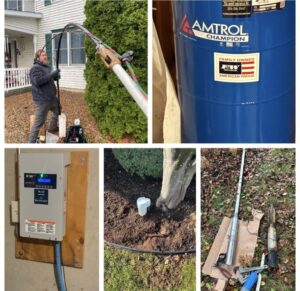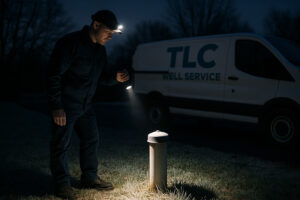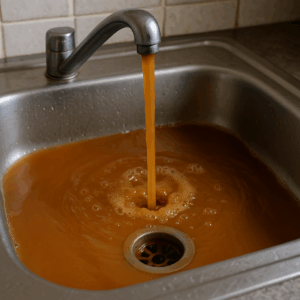Is your well running dry? Learn the common causes, how to fix a dry well, and when to call TLC Well Service for professional well repair in Northern Indiana.

Why Is My Well Dry? Common Causes and How to Fix It
If you’ve turned on your faucet and nothing comes out, your first thought might be, “Why is my well dry?” A dry well can be stressful, but it doesn’t always mean your water source is gone forever. Sometimes, it’s a temporary issue caused by water table changes, equipment problems, or clogged components.
In this guide, we’ll explain why wells go dry, how to tell if your well is truly dry, and what you can do about it — plus when to call TLC Well Service for help.
1. How to Tell If Your Well Is Dry
Before assuming your well is dry, check for these signs:
- The water sputters or spits from faucets
- Low water pressure throughout the home
- Muddy or cloudy water
- The pump turns on and off frequently
Sometimes, the issue isn’t that your well is dry — it could be a failing pump, a clogged screen, or electrical issues.
👉 Tip: Check your pressure tank and circuit breaker first. If everything looks normal, it’s time to test water levels.
2. Why Does a Well Go Dry?
There are several reasons a well might stop producing water:
Seasonal Water Table Changes
During hot, dry months or droughts, groundwater levels can drop below your pump’s reach. This is common in Northern Indiana’s sandy soils.
Overuse or High Demand
Running sprinklers, filling pools, or multiple homes sharing the same aquifer can cause temporary depletion.
Sediment or Mineral Buildup
Iron and mineral deposits can block screens or reduce flow — leading to what feels like a dry well.
Pump or Pressure Switch Failure
Even with water in the ground, a malfunctioning pump may not lift it to the surface.
Well Age or Depth
Older wells or shallow wells (less than 50 feet deep) may need deepening or redevelopment as aquifers shift over time.
3. What to Do When Your Well Runs Dry
Here’s what you can do before panicking or calling for a new well:
Step 1: Turn Off the Pump
Running your pump dry can cause severe damage. Shut it off immediately if you suspect your well is empty.
Step 2: Check for Clogs or Air Leaks
Inspect screens, filters, and the pressure tank for blockages.
Step 3: Wait and Test
Sometimes, groundwater naturally replenishes within hours or days after rainfall.
Step 4: Call a Professional
If water doesn’t return or pressure remains low, it’s time to call TLC Well Service for an on-site inspection. Our team uses professional equipment to check your static water level, pump performance, and well casing integrity.
4. How TLC Well Service Can Help
At TLC Well Service, we specialize in:
- Well inspections and water level testing
- Well pump repairs and replacements
- Preventive maintenance and cleaning
- Well deepening and redevelopment
Serving Elkhart, Goshen, South Bend, and surrounding areas, we’re known for fast, reliable service and honest diagnostics. Whether your issue is a temporary dry spell or a mechanical failure, we’ll help you restore water flow quickly and safely.
📞 Call us today at TLC Well Service or visit our Well Service page for more details.
5. How to Prevent Your Well From Running Dry
Keep your well in good shape with these simple habits:
- Schedule annual inspections to test water levels and pressure
- Install a low-water cutoff switch to protect your pump
- Space out water-intensive activities like laundry and irrigation
- Fix leaks quickly to avoid unnecessary drawdown
If your well is shallow, consider deepening it or installing storage tanks for backup capacity.
6. Can a Dry Well Refill Itself?
Yes — in many cases! Wells can naturally recharge when:
- Groundwater levels rise after rainfall
- Demand decreases in your area
- Sediment blockages are cleared
However, if your well frequently goes dry, it’s best to have a TLC Well Service professional evaluate your setup. Persistent dry wells may indicate long-term aquifer decline or pump inefficiency.
7. When to Replace or Drill a New Well
If your well consistently fails to produce water — even after rainfall and professional cleaning — it might be time for a replacement.
Signs you may need a new well:
- Your well is over 25 years old
- It’s shallower than neighboring wells
- Your pump runs continuously without pressure gain
TLC can guide you through the options, costs, and process of drilling a new well tailored to your property’s needs.
8. External Resources
To learn more about groundwater and well management:






